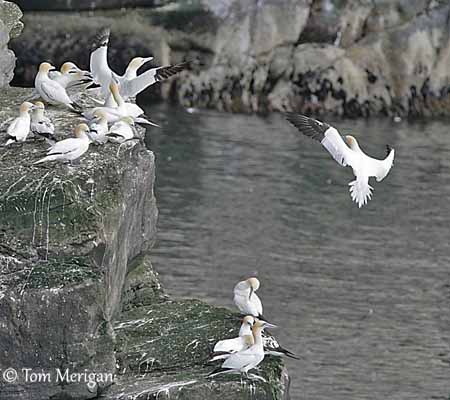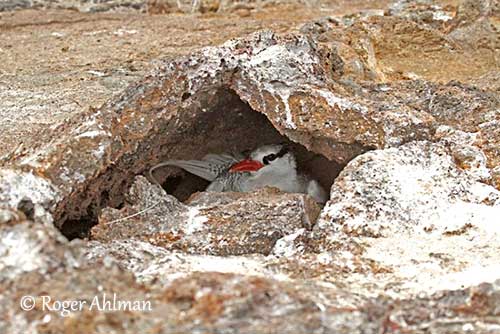
TO BE CONTINUED... Page 4
Text by Nicole Bouglouan
Photographers :
Roger Ahlman
Pbase Galleries Peru and Ecuador & My bird pictures on IBC
Steve Garvie
RAINBIRDER Photo galleries & Flickr Rainbirder
Patrick Ingremeau
TAMANDUA
Tom Merigan
Tom Merigan’s Photo Galleries
Otto Plantema
Trips around the world
These images and the text are subject to copyright and cannot be used without express authorization from the owners. Legal issues
Sources :
L’ENCYCLOPEDIE MONDIALE DES OISEAUX - Dr Christopher M. Perrins - BORDAS - ISBN: 2040185607
Wikipedia, the free encyclopaedia
Bird nests: Variety is Key for the world’s avian Architects
Be on the lookout for bird nests
The design and function of birds' nests
The bird and its nest, where everything starts…
Page 3 : Phaetontidae, Pelecanidae, Sulidae, Phalacrocoracidae, Anhingidae, Fregatidae
At the beginning of the breeding season and following several courtship displays, the nest-site is selected by the pair, or one of the members of the pair, and the nest is built within this area. For numerous species, the nest is the place where displays and copulation occur. It plays a very important role during the nesting period. It is the cradle of the chicks, the place where the adults feed them prior to their first flight towards independence.
This study continues with species that often nest in large to fairly small colonies, established in various places, from ground and rock crevices to rocky ledges and trees.

The Pelecanidae are often colonial nesters, but the ground-nesting birds are often more densely-packed than the tree-nesters. The ground nests are a slight depression, a simple scrape made with the bill, with little or no material.
But the tree-nests are more elaborate structures placed on branches of trees. The base is made with a thick layer of twigs, sometimes covered with decaying vegetation. Material is added throughout the period.
The Pink-backed Pelican builds a smaller structure, usually 10-50 metres above the ground.
The Phaethontidae nest on small oceanic islands with seacliffs. They often form loose colonies usually composed of scattered groups. The nest is placed in rocky crevice or on the ground, in sheltered scrape, protected cracks or ledges on cliffs.
The White-tailed Tropicbird nests in hollows and forks in trees at some sites, and may use trees in the forest, sometimes up to 3 km from the sea.
When nesting on cliffs in larger islands, they can be far from the sea, and even very high above the sea-level.
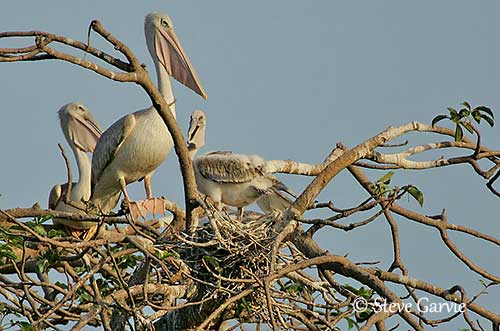
The Sulidae form colonies, from huge and large to small ones, and density vary with the type of ground and habitat.
Although nesting in colonies, boobies may build different types of nests. Abbott’s Booby and Red-footed Booby are tree nesters, and build a flimsy nest with sticks, gradually stuck together by droppings.
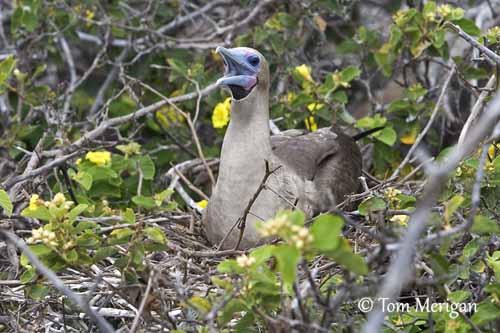
Masked Booby and Nazca Booby nest on flat ground or on slope or cliff, and the nest is a rounded mound of excreta, the famous guano. Blue-footed Booby and Brown Booby nest on the ground but often in vegetation, whereas the Peruvian Booby makes a loose pile of seaweeds stuck by droppings, or no nest at all.
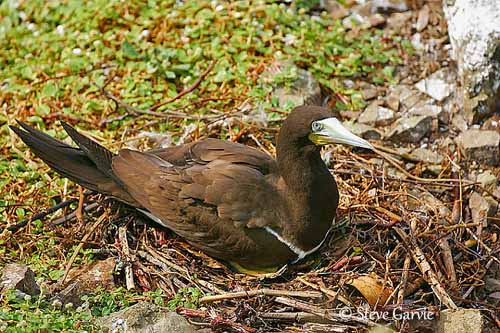
The Phalacrocoracidae, cormorants and shags, breed in colonies varying in size from a few pairs to hundreds of thousands of birds like in the Guanay Cormorant. Some colonies can have three nests per square metre.
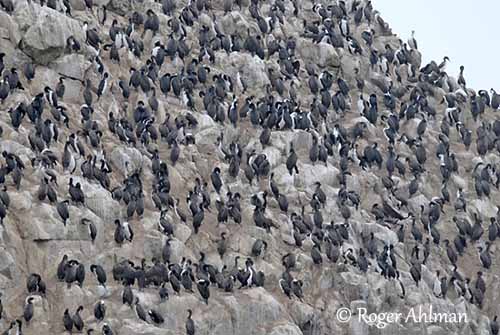
The nest is built by the female and consists of plant matter, usually seaweeds cemented together with excreta. The species nesting inland make the nest with sticks and twigs. Other materials such as debris, feathers or bones can be used too, and the lining is made with green grass or small pieces of seaweed.
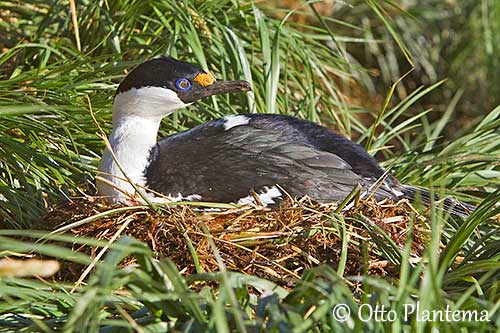
We can find several nest shapes, from a simple depression in sand, gravel or guano, or a nest made of plant matter placed on narrow ledges. The subantarctic shags use truncated cones of seaweeds held together with mud and excreta placed on flat ground.
Some nests are made with unusual materials. The South Georgia Shag sometimes uses penguin’s feathers, while some Flightless Cormorants add a high proportion of sea urchin and starfish to the nest.
In the family Anhingidae, darters and anhingas can be solitary nesters or form loose groups of several pairs. However, occasionally, large colonies are formed, and they often breed alongside other waterbirds including cormorants, herons, egrets, storks and ibises. Each male selects a nest-site by placing some vegetation, often leafy twigs, in a tree fork or in an old nest.
Once the pair is formed, both mates build the nest, usually within a day. The male brings material to the female. The structure is a bulky stick platform lined with greenery, often leaves and green twigs.

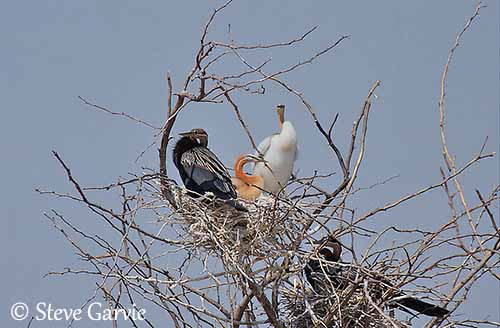
The frigatebirds of family Fregatidae often breed on islands in large colonies, up to several thousand pairs. The Ascension Frigatebird nests exclusively on the ground due to the habitat type. They form loose colonies on the ground among rocks and guano or on cliff ledges. Some feathers can be used as lining.
The four other species nest both on the ground and in trees, up to 20 metres above the ground. Once the pair is formed, both mates build the nest. The male provides nest materials to the female. Sticks, twigs, grass, seaweed, feathers can be used by to build a platform in tree or bush.
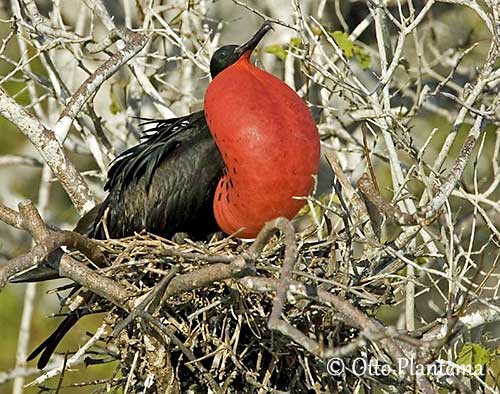

The boobies of genus Morus, the nests are made with grass and seaweeds, or debris, stuck together with excreta. Gannets lay a single egg, rarely two. Both parents incubate with their webbed feet during 44 days. The chick fledges between 90 and 100 days after hatching. It is fed by both adults. They can breed at about 4-6 years of age.
